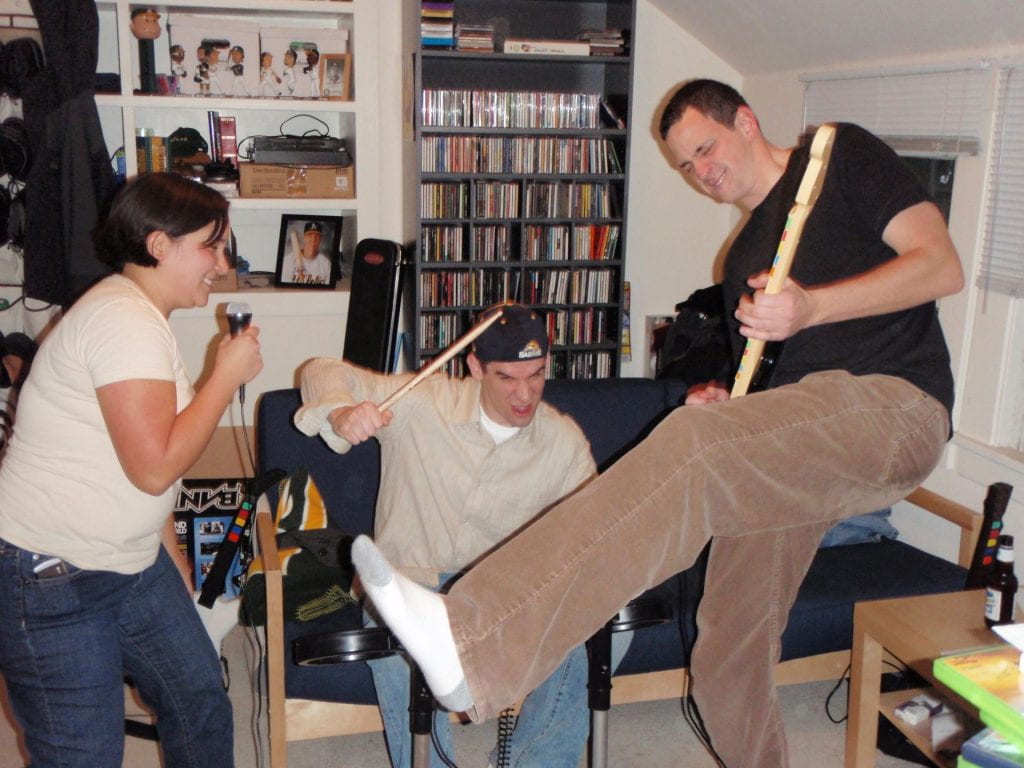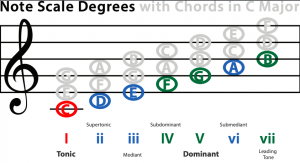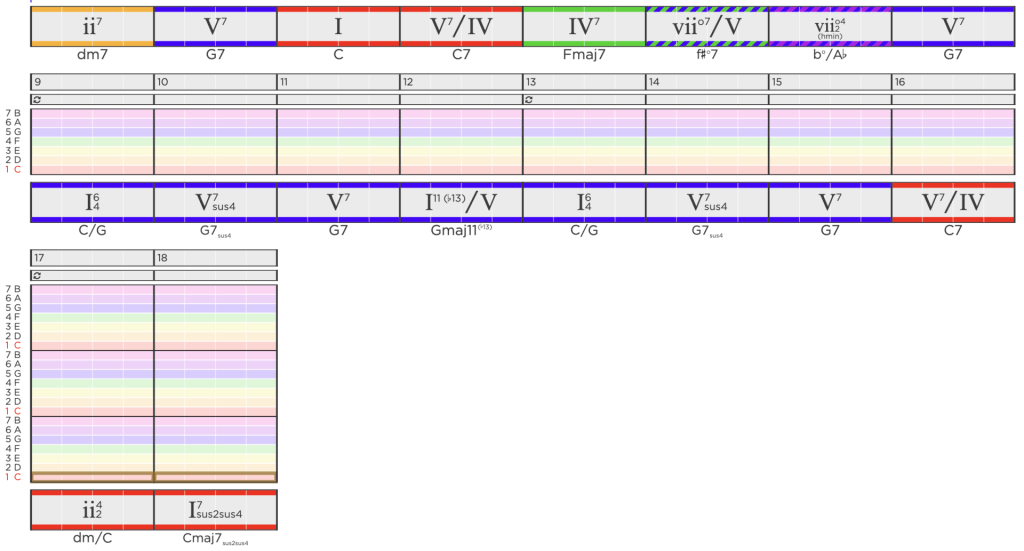
Summary
The harmony project is about chord progressions and how how to make them harmonize with the melody. We used hook theory to make our own chord progressions.
My First HookTheory Chord Progression (Harmony)

I like how each phrase ends on the 5th instead of the 1 because the melody will end on the 1 and it will make a perfect 5th. I also like the little bit of dissonance from 5th measure. For the last three chords, I used the standard c major chord progression of 1, 4, 5.
Harmony Composition Terms and Definitions
- Harmony was not originally part of music until the middle ages and the renaissance
- Harmony sounds like it comes from some other plane of existence (to exaggerate a bit)
- Harmony in its simplest and oldest form in two notes playing at the same time
- A drone is a single note that you can sing any melody above. Bagpipes are an instrument that plays a drone.
- A drone is usually the tonic
- When people started to move the drone around, it was like the melody and the harmony were parallel lines. As the melody moved up, the drone moved up
- Triad – 3 notes that come together and create a chord
- Chord progressions are the backbone of western harmony
- People discovered the “hierarchy” of chords and created rules to go with these
- In one note, there are other hidden notes called harmonics
- Humans can only really pick out three or four harmonics
- Using the harmonics humans were able to make chords by finding the notes hidden in the harmonics
- In minor chords, the middle note is a half-step lower than in a major chord
- Polyphony is when you have a bunch of chords under the melody
- Polyphony – many “voices”
- Progression – a certain series of chords or notes that “work together” and sound good
- Tonic – the first note of a scale “home”
- Dominant – the fifth note of a scale that raises tension
- Passimezzo Antico – A chord progression that’s a variation of a double tonic. It was popular during the Italian Renaissance
- Passimezzo Moderno – “Modern half step” A chord progression that’s a variation of Passimezzo Antico. It divides the section in two and often uses a contrasting progression or section known as ripresi
- Dischord – a deliberate collision of notes that are meant not to sound “pretty”
- Dissonance – lack of harmony between notes “a clash”
- Passing Notes – notes that don’t sound “pretty” but are used a small number of times like they are just “passing through”
- Suspended Notes – dissonant notes being held for as long as possible and then finally moving at the last second
- 7th Chords – A regular triad chord plus the note seven steps above the first note
- Diminished Chords – A regular triad chord with the bottom note being moved up a step
- Augmented Chords – A regular triad chord with the last note being moved up a step
- Tonic (1 and 8 chords)
- Root note creates a feeling of resolution and stability
- Supertonic, Mediant, Submediant (2, 3, 6 chords)
- Moderate tension, useful for transitions
- Dominant, Subdominant, Leading Tone (4, 5, 7 chords)
- Create lots of tension to get to the tonic

Mr. Le Duc’s Key of C Major Notes and Chords Chart (PDF)
One of My Favorite (Chord Progressions) Harmonies
Prelude no. 1 in C Major

what I like about this chord progression is that it has a lot of dissonances and it doesn’t resolve when you want it to. It also uses the circle of fifths in the first half which isn’t in this photo or recording.
My Second HookTheory Chord Progression (Harmonies)

For the first 4 measures, I kept the same chords and just switched the middle two so it had a little bit of resolution with the 5-chord. Because of that release, it gave me a lot more room to add some dissonance and crunchy chords before I resolved the final chord back to a 1.
What I Learned & Problems I Solved
I learned some more popular chord progressions and the history of harmonies and some different chords. I figured out how some of these different chords would sound one after the other.
Grammar and Spelling
Grammarly
Editor
Resources
- Assessment a Feedback
- General Music Composition Rubric (Google Doc)
- Hook Theory Tools and Tutorials
- Music Theory
- Free MIDI files midiworld.com/files/
- MIDI file of Beethoven’s Ode to Joy from his 9th symphony
- Coldplay Talk sample midi file
- MIDI and Music Notation Editors
- onlinesequencer.net – online
- flat.io – online
- noteflight.com – online
- MuseScore downloadable program
- GarageBand